Haneda Airport drop off & pick up areas
Haneda Airport (officially named as Tokyo International Airport) is the main aviate entrance to Tokyo for both domestic and international flights. Since the COVID-19 pandemic ended, passenger numbers have begun to return, with domestic passenger numbers expected to reach 102.5% of the previous year, international passenger numbers expected to reach 128.7%, and overall passenger numbers expected to reach 108.7% of the previous year, almost returning to the number of passengers before the COVID-19 pandemic.
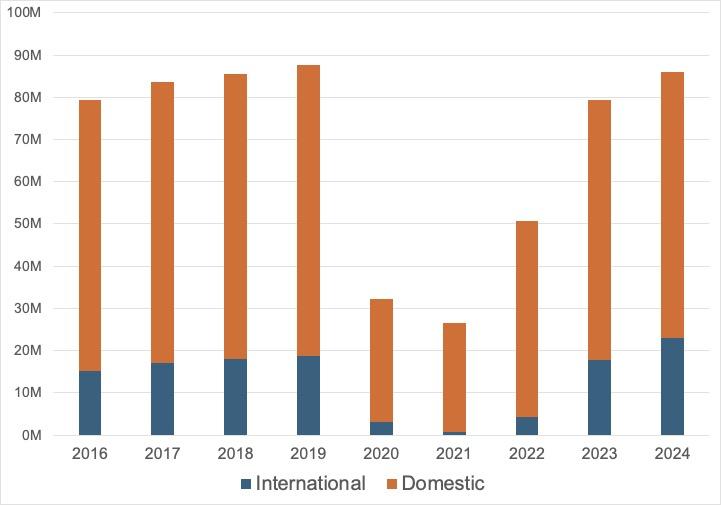
(Source : Japan Airport Terminal Co., Ltd.)
Looking at the breakdown of international flight passengers mainly using Haneda Airport’s Terminal 3, as you know from various articles, we can see that there is an increase in non-Japanese (inbound) passengers. It seems that repeat inbound passengers tend to avoid Tokyo where they had already experienced in their first time visit, and arrive in other cities, but the inflow and outflow of passengers to Tokyo is still strong.
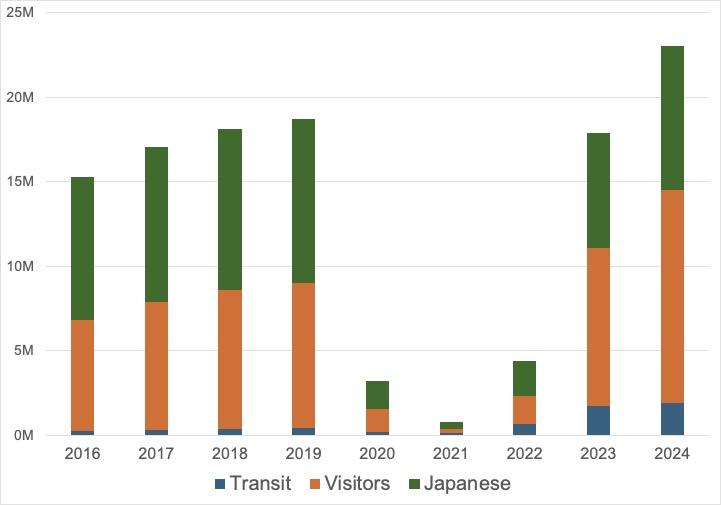
(Source : Japan Airport Terminal Co., Ltd.)
Perhaps this boom has led to reselling business of parking reservations and illegal taxi services (these two links only in Japanese). However, considering that the number of passengers is the same as it was before the COVID-19 pandemic, a different perspective may be needed to understand the background to these misdeeds.
It is natural that people want to make a reservation in advance even if they have to pay extra to avoid parking congestion. The reason why parking lots are so crowded which cause active reservation resales business is because, as explained in the Ministry of Land, Infrastructure, Transport and Tourism’s study materials (only in Japanese), the use of public transportation by airport users has decreased (91% to 83%) and the use of private cars has increased (8% to 14%). As the materials also explain, while the use of trains has decreased, the use of buses and taxis has not changed, so this may be due to a change in lifestyle, but it is understandable that when it comes to using the airport with large luggage, people would want to choose automobiles over trains. The same goes for visitors to Japan with large luggage, who will end up using buses or taxis after their flight, if they just want to get to their accommodation. In this situation, parking reservation resales target Japanese customers, and illegal taxis target foreign customers, and the reality is that measures are not effective and is to be reinforced.
Due to the increasing use of automobiles, congestion at Haneda Airport’s boarding and disembarking areas happens every day. When considering what the cause of this is, the floor guide on the Haneda Airport official website seems to provide the answer. First of all, since there are no separate departure and arrival areas, naturally all vehicles gather in the same place. Also, if you look at the entrance plaza on the first floor of Terminal 3, you will not find a private vehicle stand. So where should private vehicles that are picking up or dropping off family and friends departing or arriving on international flights stop?
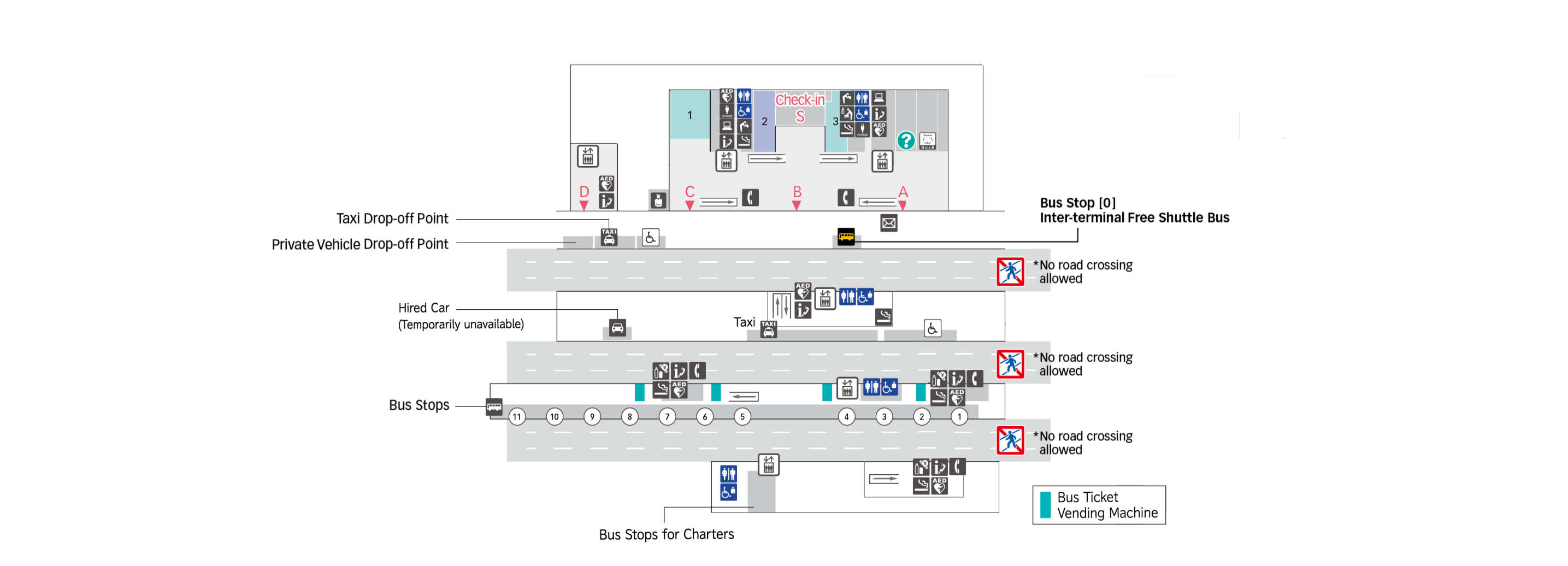
In addition to private cars, vehicles that look like hired ones with reservations and unlicensed illegal taxis also gather at the “taxi and private car drop-off area” closest to the terminal building. A constant stream of taxis carrying passengers park there, double or even triply lined up, waiting for payment and dropping off the passengers and luggage. It’s inevitable that it will become crowded. The airport’s intention is probably to have private cars that come to pick passengers up park in the parking lot and be picked up in the lobby, but where should they go if they can’t park in the crowded in the parking lot? Perhaps it was designed in such a way that private cars are not allowed to wait here, but this design is extremely inconsiderate.
In particular, for wheelchair users and people with weak legs, it is better to have to travel a shorter distance in the airport, so parking lots with long travel distances are not necessarily the best. The only priority boarding and disembarking areas in Terminal 3 are the private vehicle drop-off area and the taxi stand. There is also a priority boarding and disembarking area on the first floor of parking lot P5, but it is a long walk away and if the vehicle cannot enter the parking lot, it will be impossible to get there.
The priority drop-off area for private vehicles, where taxis and hired vehicles used to stop without any consideration, even though it is right in front of a police box, has recently been clearly marked as “exclusive use for priority users,” and illegal parking is decreasing. The priority areas that do not have such signs in Terminals 1 and 2 are almost lawless. There is a poster like this at the international boarding and disembarking area of Terminal 2, but it does not seem to have had any effect.
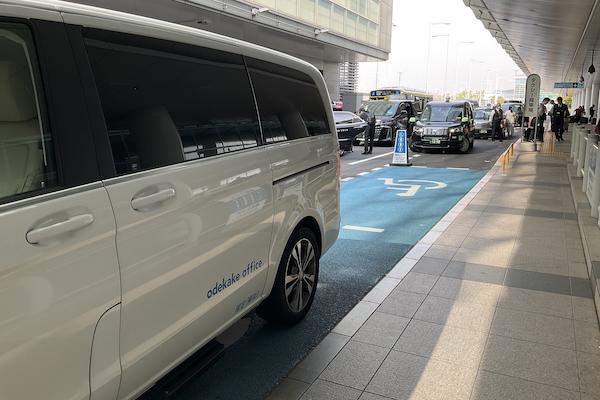
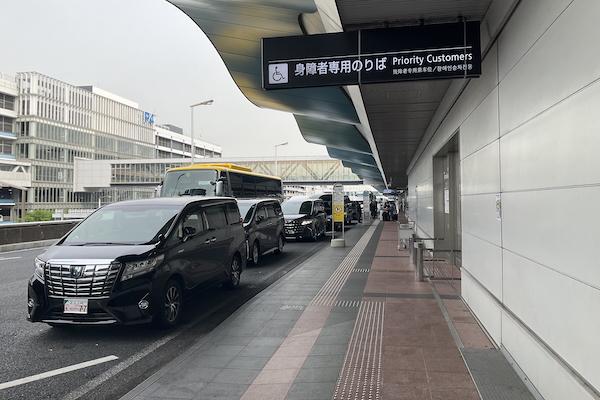
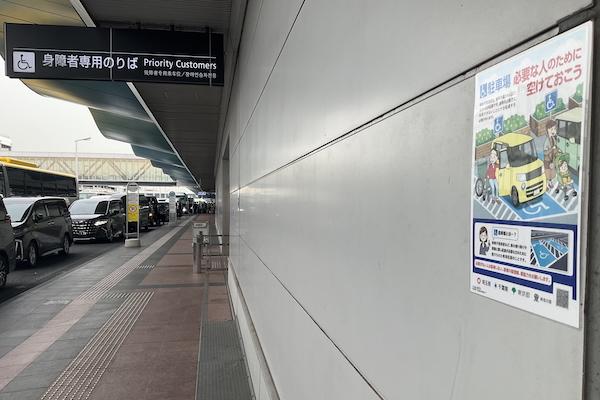
The priority areas themselves also need improvement. Terminal 3 is spacious and well equipped with ramps and handrails, but Terminals 1 and 2 are very poor. There is only one parking space available, but if you park within that space, you cannot access the step-free area reserved for wheelchairs, so you have no choice but to park outside the parking space. To deploy the wheelchair lift at the rear gate and access the step-free area, you have to park even further outside the parking space. What era were these designed and installed in?
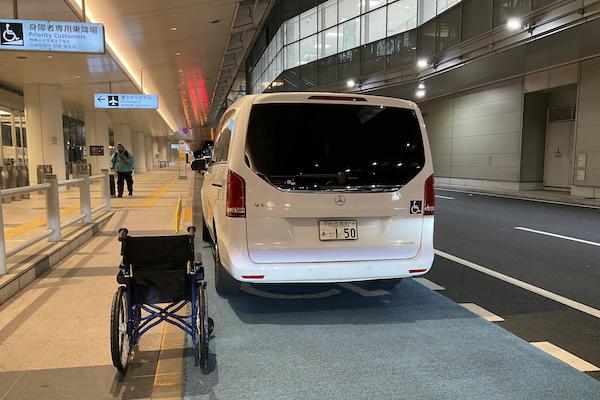
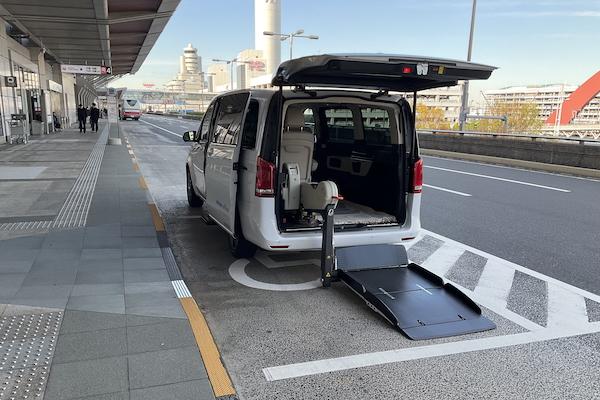
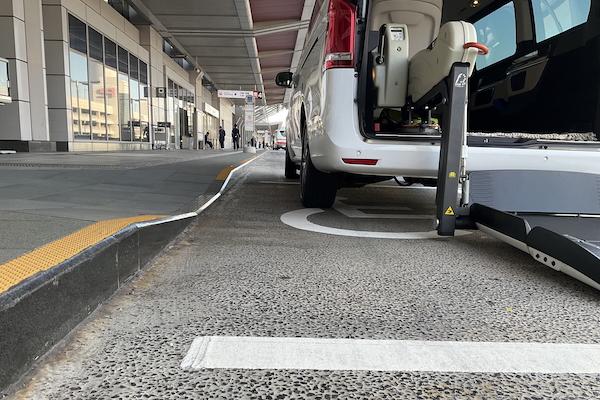
来日される車いす利用者の方々は、東京公共交通機関のアクセスビリティーに感心されてはいますが、アクセシブルルームと銘打ったホテル客室が名ばかりであることに落胆されているのも事実です。東京の空の玄関口として、しっかりとした設計や、タクシー・ハイヤーにもマナーある利用をしてもらいたいものです。
Wheelchair users who come to Japan are impressed with the accessibility of Tokyo’s public transportation, but are also disappointed that hotel rooms that are labeled as accessible are in name only. As the gateway to Tokyo’s skies, we would like to see more proper design and more proper and better manners with taxis and hired vehicles.

